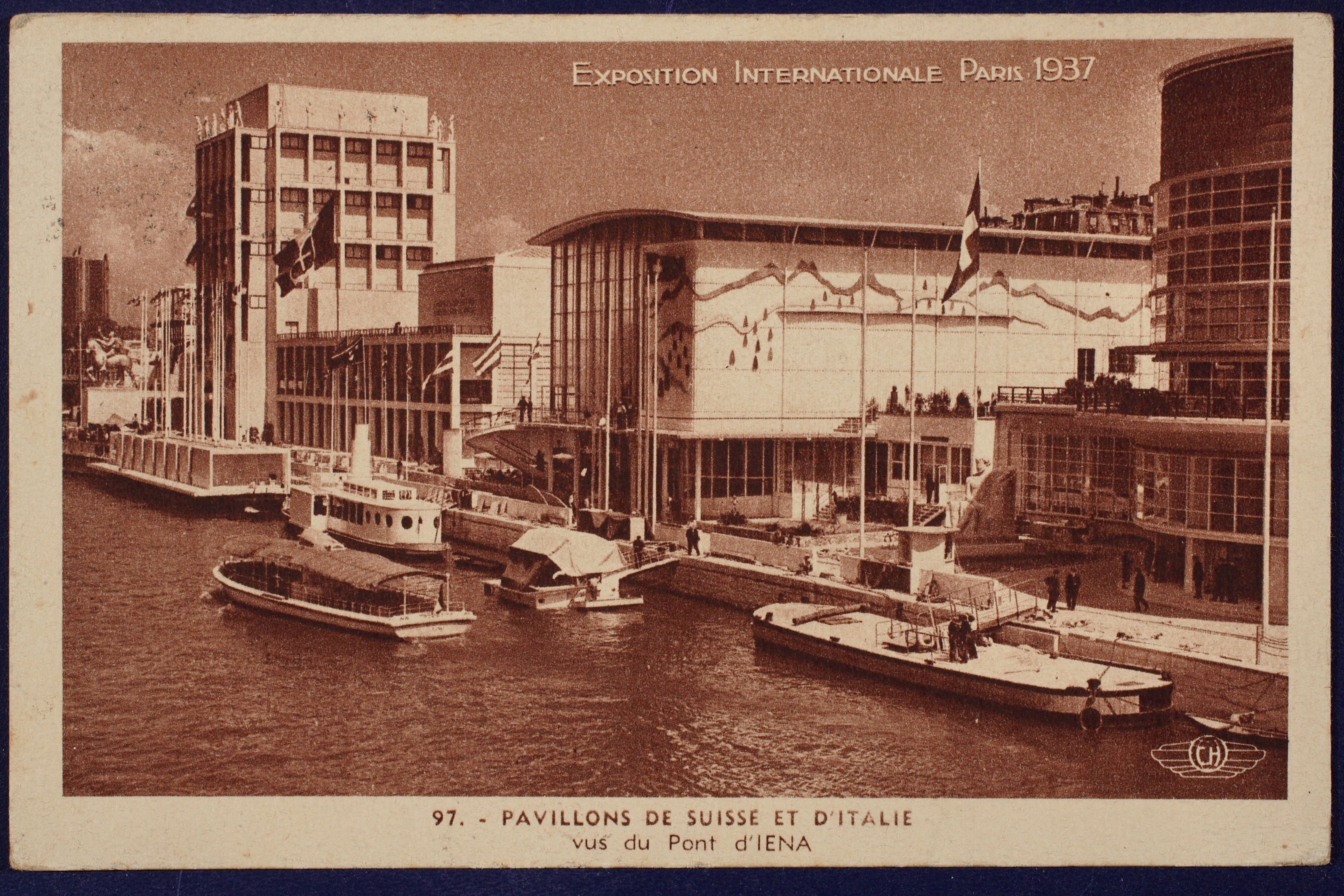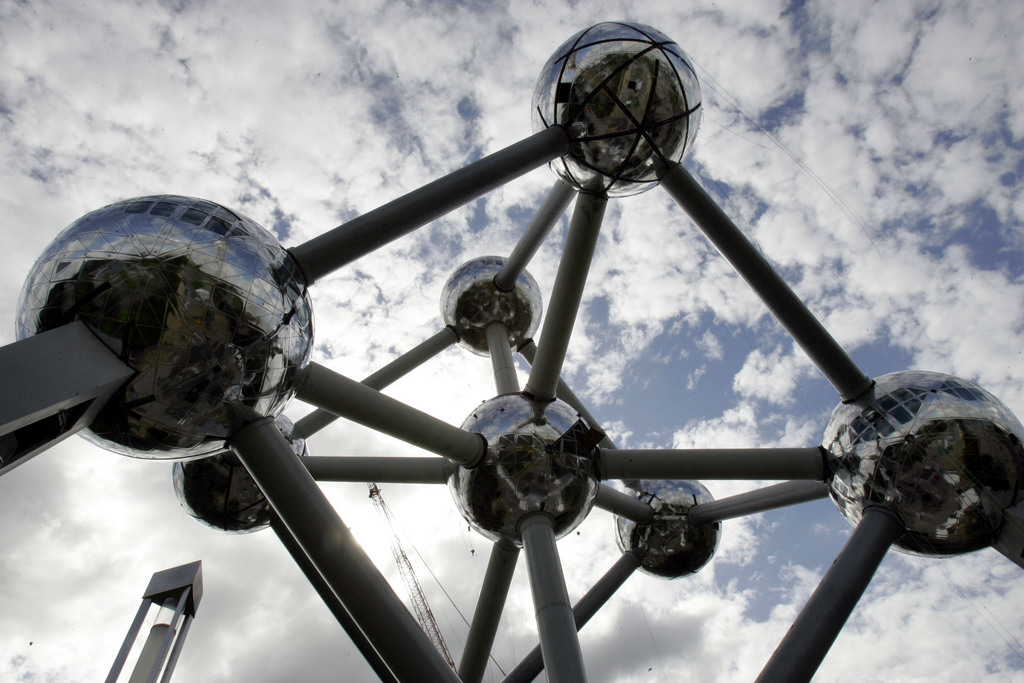World expos: reflecting the global zeitgeist

The Eiffel Tower or the Brussels Atomium are the most famous relics of world expos past, when such events were mostly trade fairs. Nowadays expos are devoted to themes of global importance presented in eye-catching ways.
“You could describe earlier world expos as a type of economic and industrial Olympic Games” historian Marco Marcacci told swissinfo.ch.
The first events in London (1851), New York (1853) and Paris (1855) were all held against the backdrop of the rising tide of industrialisation and economic positivism of the 19th century. “At the same time an expo was a showcase for the host country and a way for participating countries to compare themselves,” he said.

More
Universal Expos from past to present
There was a didactic purpose to these early expos, Marcacci said. “People wanted to explain the social necessity of progress and to highlight how ingenious countries and their citizens were, and how this ingenuity had been transformed into material and industrial accomplishments.”
Groundbreaking discoveries such as the first telephone, telegraph, electric light, car and radio were all unveiled at these shows.
But as the expos became more popular, space in the halls became tight. In Paris 1867 the concept of county pavilions – still in use today and to be designed as the county pleases – was introduced.
Early 20th century expos bore witness to the rising tide of nationalism. Inventions, now presented at special fairs, were pushed out of the spotlight. Exhibiting countries took on a starring role instead.
“The trust in progress reduced, which meant that the didactic purpose got lost, to the benefit of PR, sponsoring and using expos for domestic political aims, such as renovating city infrastructure,” explained the historian.
Theme is king
Expos were, for a long time, little more than a showcase for the host land.
“An exhibition was international… but for the mere fact that different countries took part in it,” Maurice Isaac, the first director of the International Exhibitions BureauExternal link (BIE), the international organisation that oversees expos, once said. Founded in 1931, the BIE counts Switzerland among its founder members.
Nowadays the theme makes an expo, according to Vicente Gonzalez Loscertales, the BIE Secretary General. “It brings together different participants – scholars, experts, professionals and ordinary citizens,” he said.
A world exhibition also encourages important visits: Switzerland used the expos in 2005 (Japan) and 2010 (China) to improve relations with these countries, which in both cases later led, or at least paved the way towards, a free trade agreement.
“World exhibitions still represent an important opportunity for countries to present themselves and to cultivate bilateral relations, particularly with the host country,” the cabinet wrote in its message about Swiss participationExternal link at the Expo 2015.External link
But do such events still make sense in this era of the “global village” and total connectivity? “They can no longer be presentation stages for new products. Progress and innovation proceed at a faster pace than expos,” wrote Gonzalez Loscertales in the magazine Public Diplomacy.
What is key for Martin Heller, artistic director of the Swiss national expo in 2002, Expo.02, are the experiences that such events bring, which cannot be replaced in any way.
“Expos are always, first and foremost, places. You meet other people, it rains or the sun shines, there is hustle and bustle. That’s what the visitors want,” he said.
Expos are industrial fairs, but nowadays its more about nations pitting themselves against each other in terms of “creative output in the competition of [offering good] experiences”.
Swiss pavilions
Swiss appearances at expos seem to have gone down well with the public over the last 15 years, as can be witnessed through the good press coverage for Hannover 2000 or the three million visitor record at the Swiss pavilion in Shanghai 2010.
The Shanghai pavilion, with its unfortunately often malfunctioning chair lift, and the Aichi 2005 ExpoExternal link with its accessible “mountain” focused a lot on tourism. But at the Expo Milano 2015, Switzerland will be concentrating on the theme of “Feeding the planet, energy for life” and offering food to visitors.
Good expo presentation requires strong images and a story, Heller said. But he sees the 2015 Swiss contribution as including “too many layers to taste: this dish has to satisfy everyone and it can’t”.
Just ticking off the boxes and submitting everything to the “presumed economic pressure” would be unwise. A great idea for a great presentation “cannot be forced”.
Expos in numbers
World exhibitions have managed to attract millions of visitors from the beginning: six million came to the first world expo in London in 1851. Numbers continually increased, reaching a first big peak of 50 million in Paris 1900. Afterwards, numbers decreased due to the fact that innovations were mostly presented at specialised international fairs. It was only in 1958 that the 50-million mark was reached again, in Brussels, as it was in 1964-5 in New York and 1967 in Montreal. 1970 saw a new record in Osaka, Japan, with 64 million visitors. The last world expo, in 2010 in Shanghai, China, reached a new record of 73 million people.
(Source: Historical Dictionary of Switzerland, Expo Museum)
World expos
A world exhibition is non-commercial and is organised by the country which was won the competition to host it. It, in turn, invites other countries to participate.
The first world expo took place in 1851 in London, which inspired other nations to follow on, including the 1889 expo in Paris, which resulted in the iconic Eiffel Tower. Each expo has a global theme. The last world expo took place in Shanghai in 2010. The next, in Milan, takes place from May 1 to October 31, 2015 and in on the theme “Feeding the planet, energy for life”. Around 130 countries are expected to take part.
Switzerland’s budget for Expo Milano 2015 is around CHF23 million ($25 million), somewhat less than was spent in Shanghai. In April 2014 it was announced that the Swiss Pavilion in Milan would be built on a smaller scale than originally intended, for cost reasons.
The International Exhibitions Bureau (BIE) has overseen the calendar, bidding, selection, and organisation of World and International Expos since 1931. 157 nations are currently part of the organisation.
(Translated from German by Isobel Leybold-Johnson)

In compliance with the JTI standards
More: SWI swissinfo.ch certified by the Journalism Trust Initiative









You can find an overview of ongoing debates with our journalists here . Please join us!
If you want to start a conversation about a topic raised in this article or want to report factual errors, email us at english@swissinfo.ch.